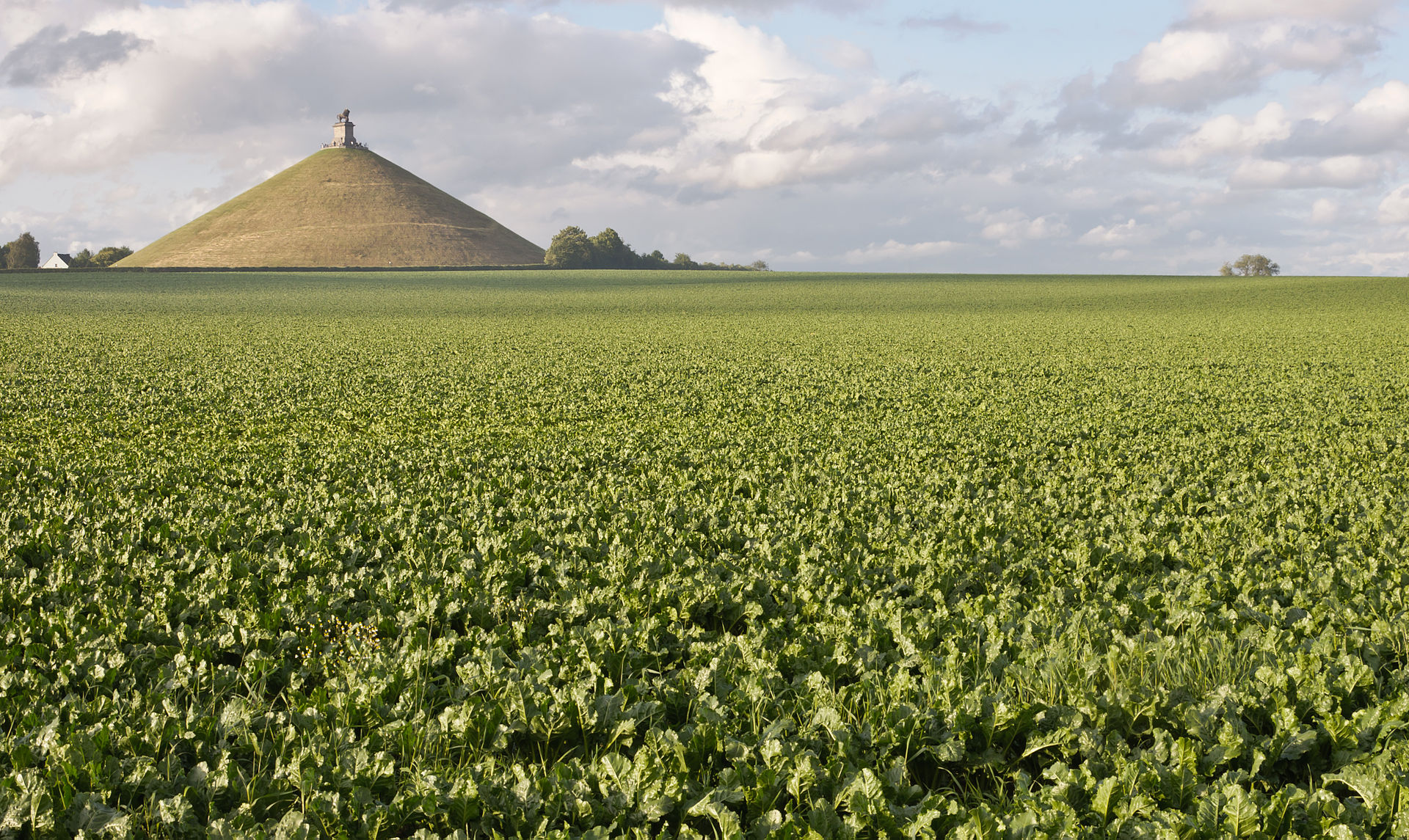
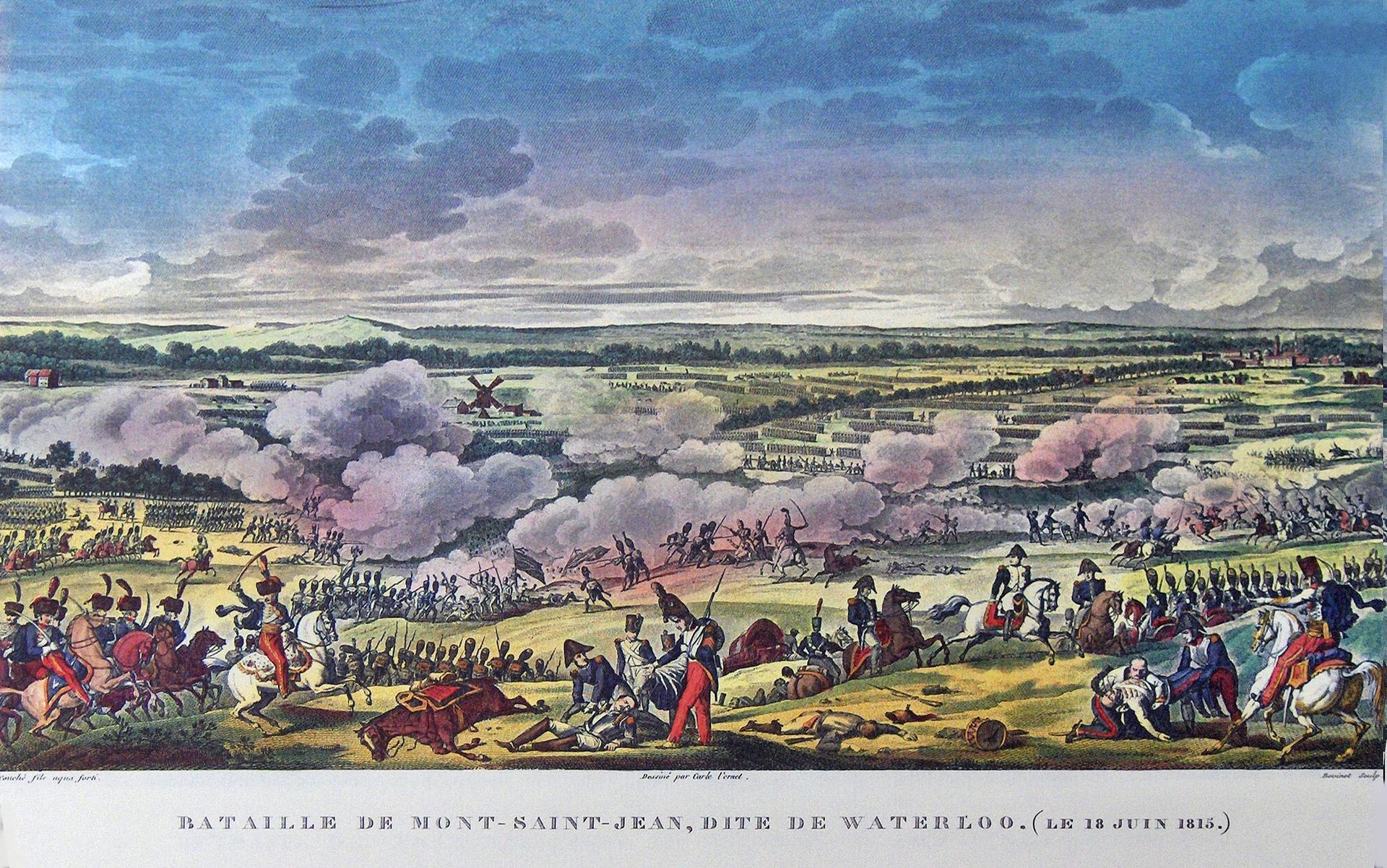

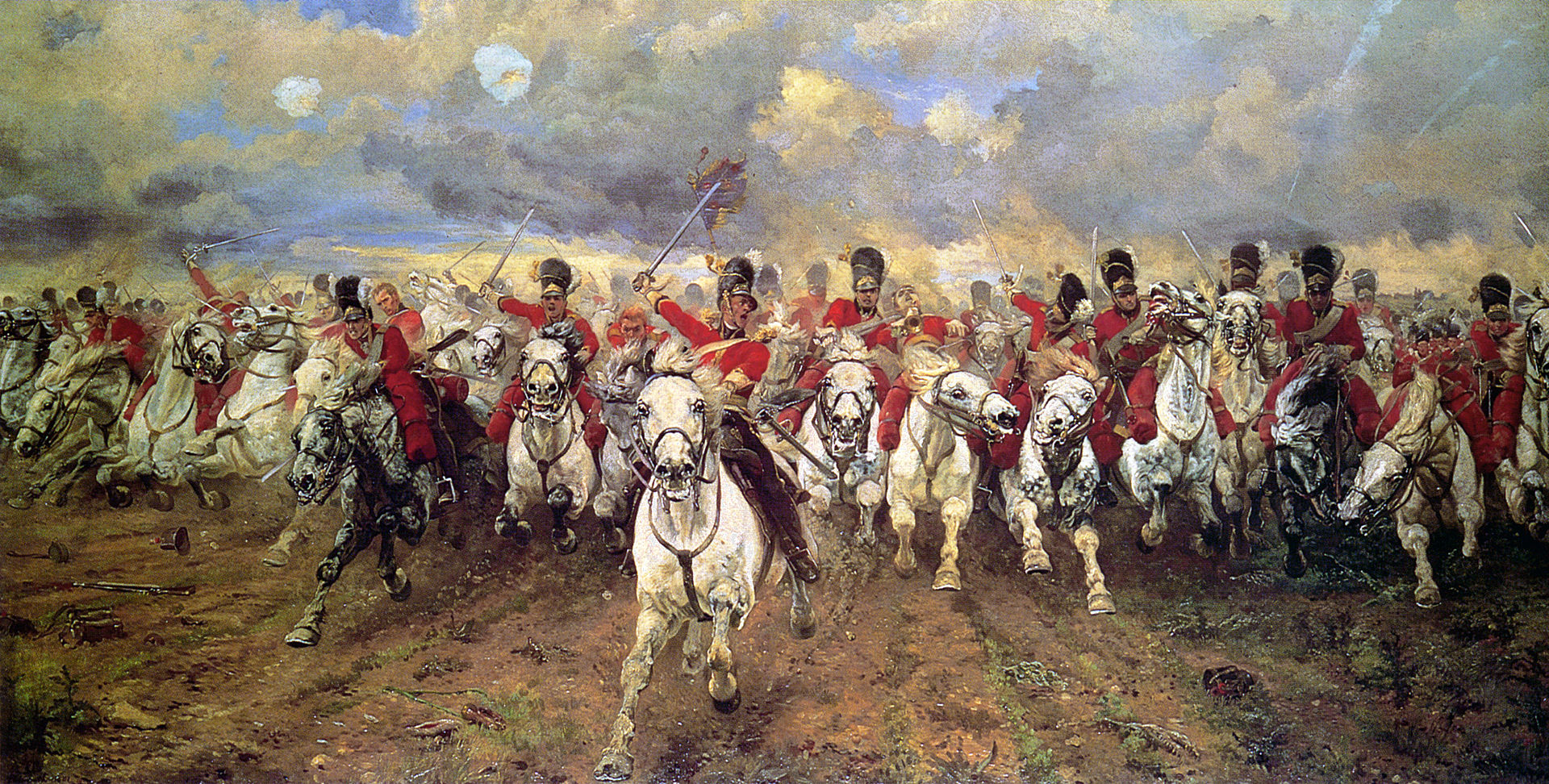
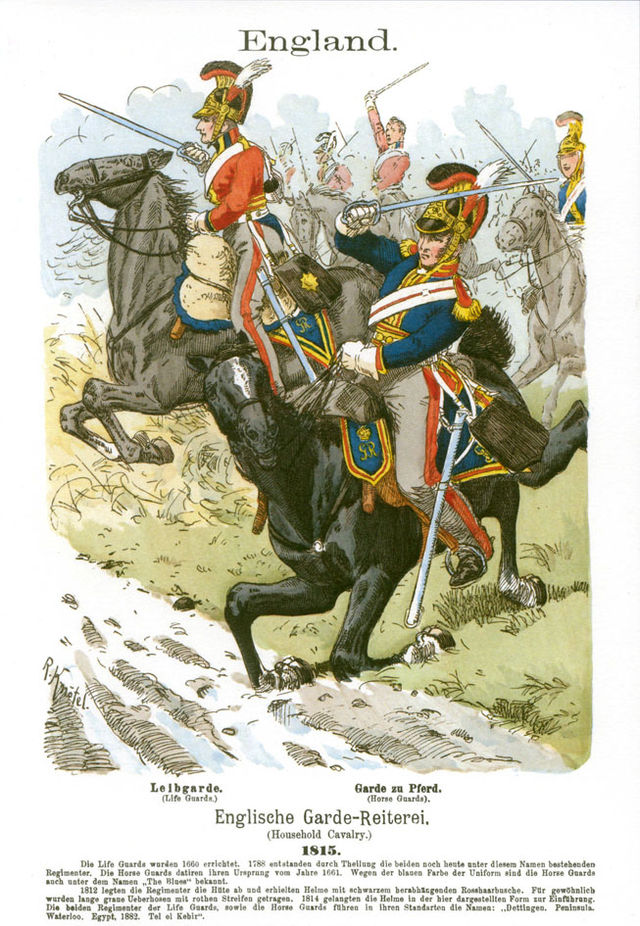
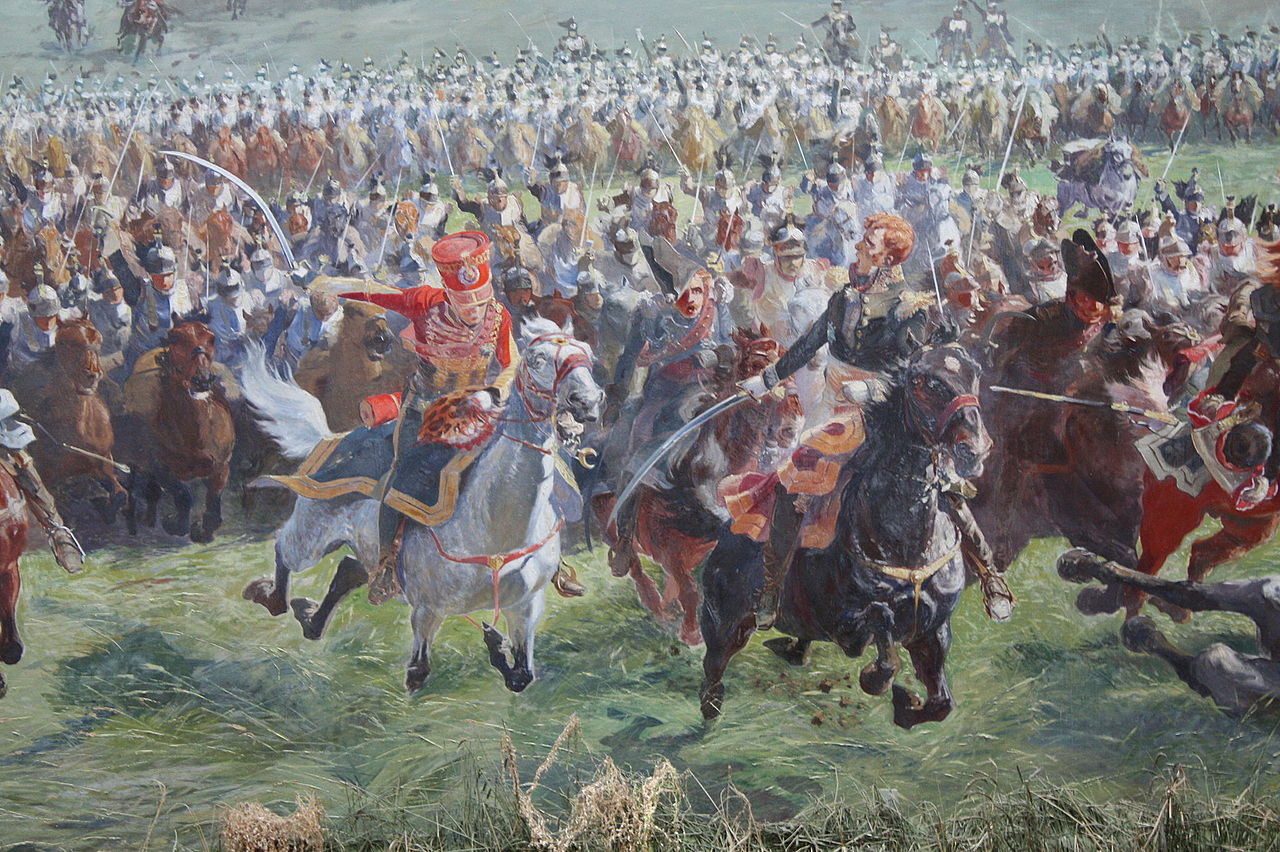
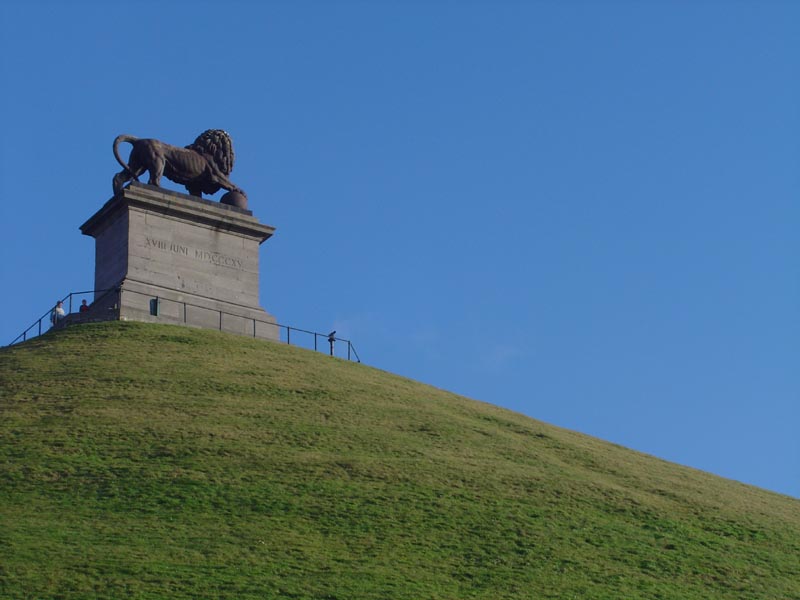
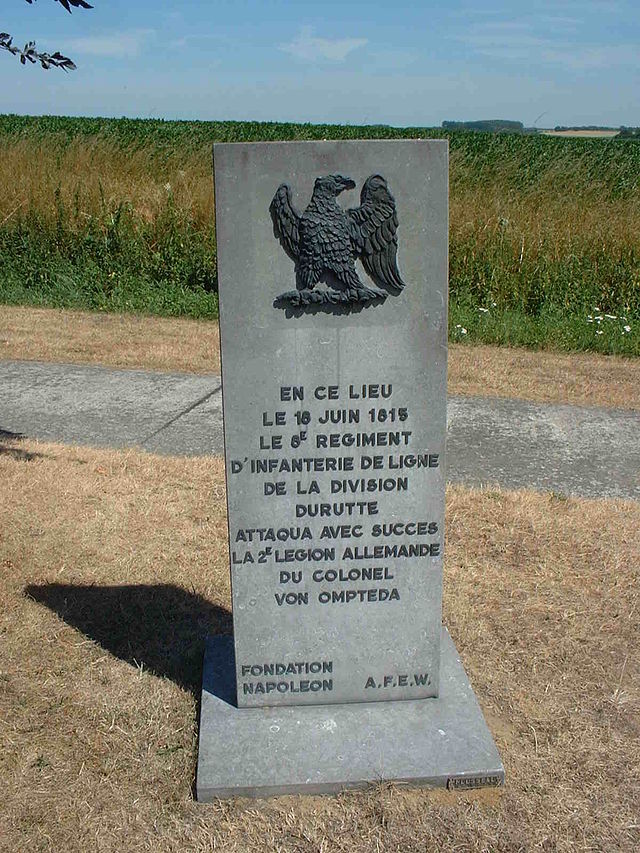

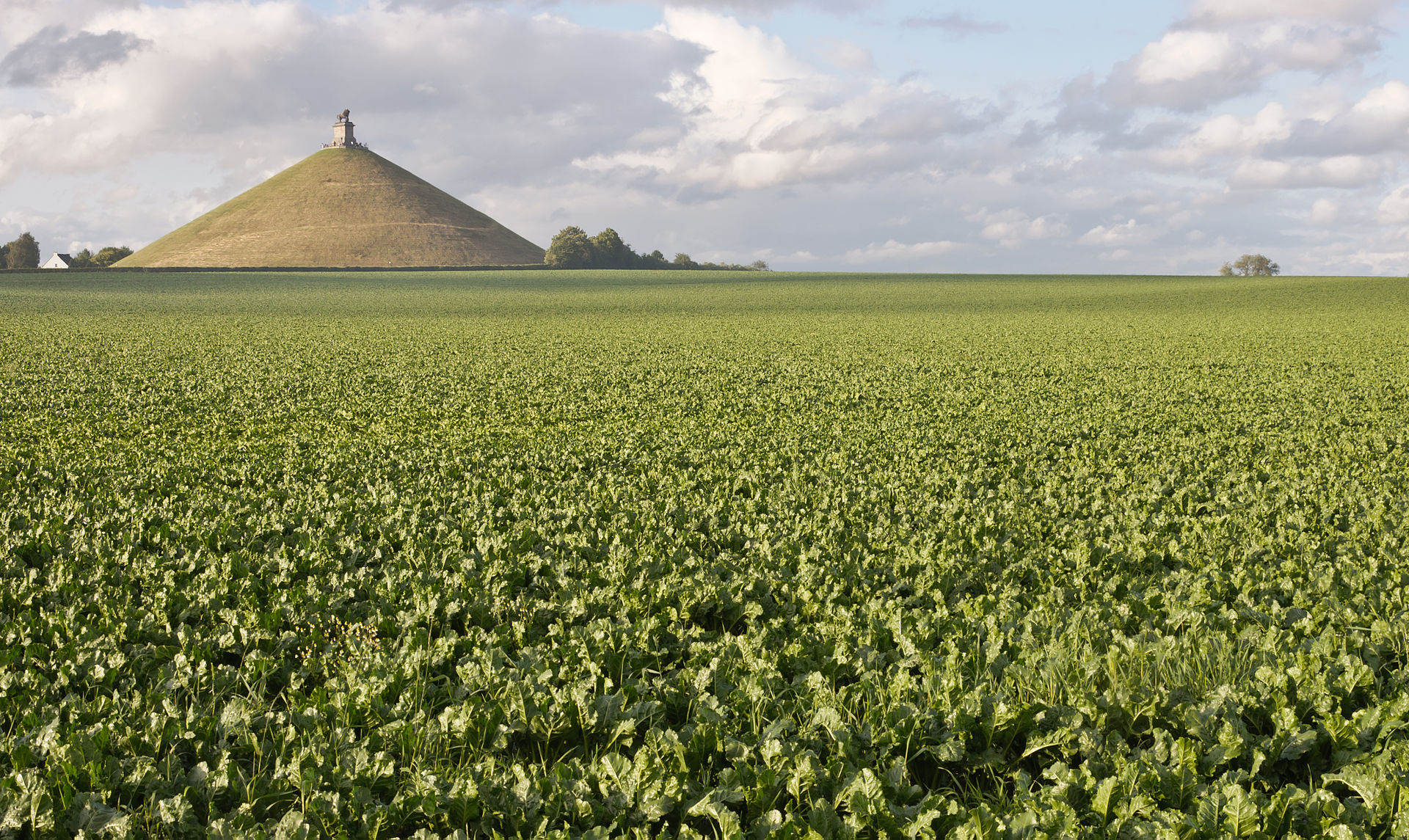
滑鐵盧戰役(英文:Battle of Waterloo,法語:Bataille de Waterloo,荷蘭語:Slag bij Waterloo,德語:Schlacht bei Waterloo/Schlacht bei Belle-Alliance)是1815年6月18日大英帝國,荷蘭聯合普魯士王國與法蘭西第一帝國在布魯塞爾南部的滑鐵盧進行的一次戰役。這是拿破崙戰爭中的最後一次戰役,也是軍事史上最著名的戰役之一。這場戰役中威靈頓公爵和布呂歇爾指揮的英普聯軍擊敗了拿破崙指揮的法軍,這標誌著拿破崙帝國的徹底覆滅。後世因此將重大的失敗比喻為滑鐵盧。
1815年拿破崙率舊部逃離厄爾巴島,重返巴黎。英國、普魯士、奧地利等國結成第七次反法同盟分頭包圍法國。威靈頓公爵和布呂歇爾指揮的英普聯軍集結在法國東北邊境。拿破崙乘反法同盟的軍隊尚未集結完成先發制人,6月16日率領12萬法軍主力在里尼之戰擊敗布呂歇爾將軍率領的普軍,隨後派遣格魯希元帥帶領3萬3千名法軍追擊逃跑的普軍,自己則趕到比利時布魯塞爾以南的滑鐵盧,與威靈頓公爵率領的英軍對峙。但是格魯希未能按命令消滅逃跑的普軍,反而讓普軍擺脫了追蹤。布呂歇爾花了一個上午重整軍隊,馬不停蹄地奔赴滑鐵盧。爲等待地面乾燥,法軍於6月18日午後才向英軍發起進攻。戰役中法軍的優勢騎兵不斷衝擊英軍的方陣,晚6時正當拿破崙將要宣佈獲勝之刻,布呂歇爾率領的普軍趕到並猛攻法軍右翼。晚9時,法軍被普軍突破而崩潰。
滑鐵盧戰役後,聯軍很快攻佔巴黎,拿破崙被放逐到大西洋中的聖赫勒拿島,六年後死去.
The Battle of Waterloo was fought on Sunday, 18 June 1815, near Waterloo in present-day Belgium, then part of the United Kingdom of the Netherlands. A French army under the command of Napoleon was defeated by the armies of the Seventh Coalition, comprising an Anglo-allied army under the command of the Duke of Wellington combined with a Prussian army under the command of Gebhard von Blücher.
Upon Napoleon's return to power in March 1815, many states that had opposed him formed the Seventh Coalition and began to mobilize armies. Two large forces under Wellington and Blücher assembled close to the north-eastern border of France. Napoleon chose to attack in the hope of destroying them before they could join in a coordinated invasion of France with other members of the coalition. Waterloo was the decisive engagement of the Waterloo Campaign and Napoleon's last. According to Wellington, the battle was "the nearest-run thing you ever saw in your life".[10] The defeat at Waterloo ended Napoleon's rule as Emperor of the French, and marked the end of his Hundred Days return from exile.
Two days before the battle, Blücher's Prussian army had been defeated by the French at Ligny. Wellington decided to offer battle upon learning that the Prussian army had regrouped and was able to march to his support. Wellington's army, positioned across the Brussels road on the Mont-Saint-Jean escarpment, withstood repeated attacks by the French in a defensive mode, until, in the evening, the Prussians arrived in force and broke through Napoleon's right flank. At that moment, Wellington's Anglo-allied army counter-attacked and drove the French army in disorder from the field. Pursuing coalition forces entered France and restored King Louis XVIII to the French throne. Napoleon abdicated, eventually surrendering to Captain Maitland of HMS Bellerophon, part of the British blockade, and was exiled to Saint Helena where he died in 1821.
The battlefield is located in Belgium, about 15 kilometres (9.3 mi) south of Brussels, and about 2 kilometres (1.2 mi) from the town of Waterloo. The site of the battlefield today is dominated by a large monument, the Lion's Mound. As this mound was constructed from earth taken from the battlefield itself, the contemporary topography of the battlefield near the mound has not been preserved.






